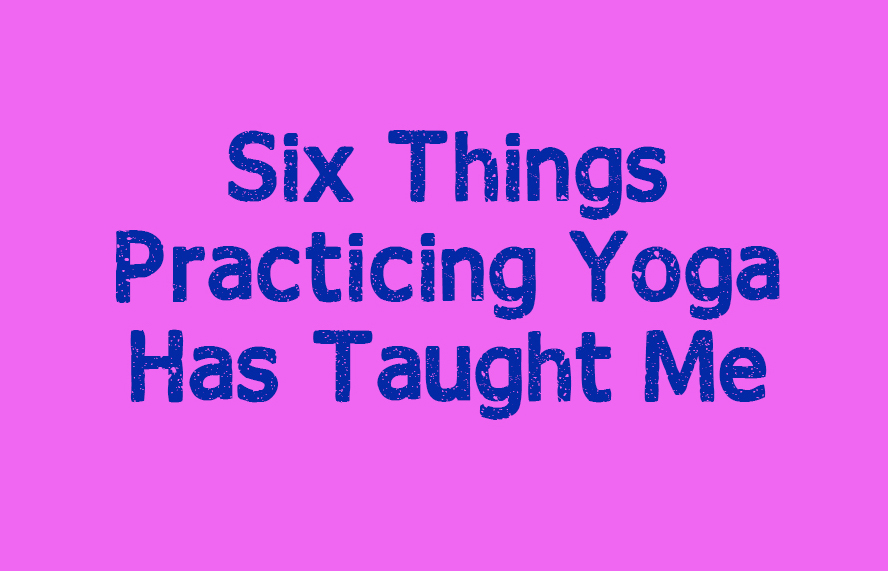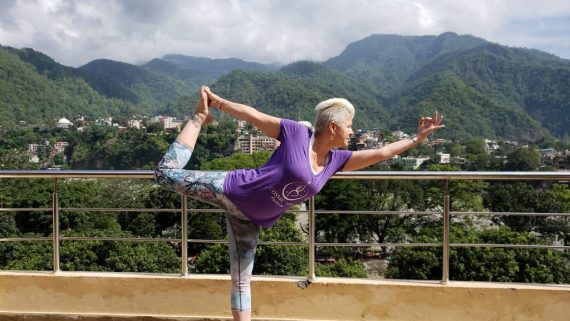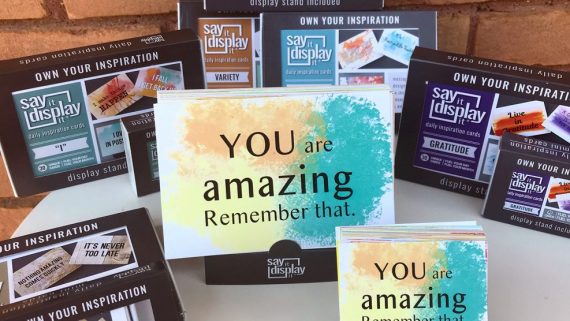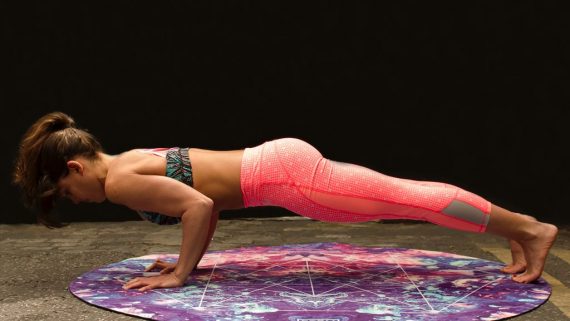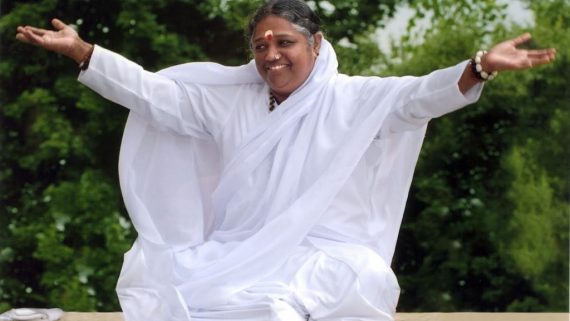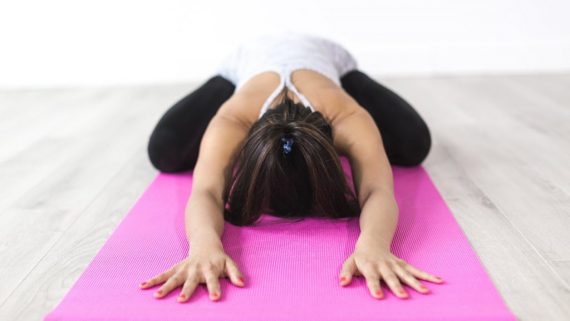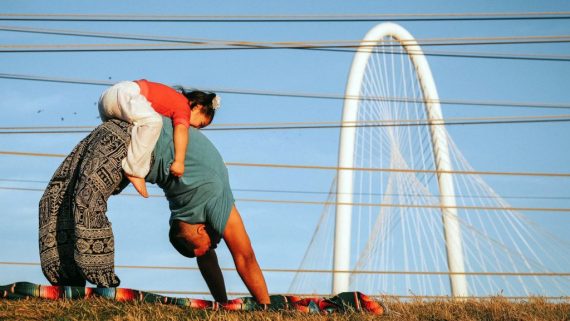Six Things Practicing Yoga Has Taught Me
Six Things Practicing Yoga Has Taught Me
By: Marie Williams, Dallas Yoga Magazine Writer

Yoga is about so much more than “pretty postures” and being able to twist, bend and move our bodies into unique, yet eloquent poses. Arm balances require core as well as upper body strength and look beautiful when done correctly. This aspect fascinated me to the point of always wanting to learn a new one. Once I saw the arm balance being done, I would make mental notes of the steps to completing that arm balance and would often practice after class was over. At home, I practiced daily, falling, but eager to nail the posture. During this process, my “thinking mind” was speeding ahead full throttle. I could never just relax into any pose and enjoy it because I was too busy thinking about how it should look.
That was three years ago.
Today, my intention for practicing yoga is based on the experiences I have and reflecting upon them after each class. The sensations I feel, passing thoughts I may have, the instructor’s cues, choice of music and the energy from other yogis all contribute to my overall experience. On days when I feel heavy in both mind and body, I seek to surrender such thoughts and feelings to my mat. I try to allow myself the space to feel as deeply as I need to, so that I can receive from the class what the Universe wishes me to have. No matter the type of day I am having, this renewed intention provides me more positive experiences, chockfull of valuable life lessons.
When a yoga practitioner has developed his/her practice enough to “honor the body” he/she has chosen to take the necessary yoga or fitness classes without overdoing it. The individual will take a few days to rest in between practices and workouts. This yogi will be strategic, yet creative with how he/she chooses to put class combinations together, based on what the person feels is needed at that time. My method of practice was opposite of this structure. I almost burned out, completely.
I have always had a high level of energy, mostly from playing competitive tennis and running. I carried this energy into my yoga practice and for a year and a half, blew through many classes quickly. Of course, I was taking difficult class combinations such as a high intensity interval class, a hot yoga class, followed up by a Flow class. I did not necessarily follow this order, but I took three classes, all in one day over a period of several months. I gained muscle, got stronger in my arms and legs, and became leaner and more toned. However, these results came at a costly price.
On days that I chose to take three classes. I noticed that after I had taken the last class, I felt much more exhausted than when I only took two-class combinations. Upon my arrival home, I would crash for four to five hours in bed, due to extreme fatigue. On a weekly basis, I would go to the studio four to five days a week, averaging about eight to twelve classes. Seeing this pattern, my yoga instructors quickly became worried about both my mental and physical health. I was compromising my own personal safety, as well as my body. I rarely took days off to rest and when I did, it was only for a day or two, when I should have been taking at least three days to fully recover. I just wanted to practice as much as possible, but I had become reckless in my pursuit of good exercise.
I practice about twice a week now, only taking two-class combinations. I try to take three or four days to completely rest before restarting workouts and practices. I also stretch at home in between these yoga/fitness classes. My selections of class combinations are based on what I specifically need that day. Examples of ideal class combinations would be: two Powerful Flow classes at BSY Dallas or a Power Flow class followed by a Barre Band class at SunstoneFIT. I also like hot yoga chased up with an intense 45-minute Pilates class.
At the beginning of my yoga journey, I had a hard time focusing on anything having to do with the present. During yoga classes, I would be thinking about other things that did not have to do with yoga. As a result, I was constantly distracted and not dialed in to what the instructor was explaining through the posture cues. Looking back, my past monkey mind caused me to miss out on so much. At that time, I had no idea how important staying in the present was for my practice. I just struggled with the concept of being able to focus for 60 minutes.
Right now, keeping my mind from futuristic thinking is the challenge. Since I have a variety of postures in my asana practice, I am confident in my ability to do them when cued. Sometimes, I start thinking about how particular postures “should look” if done correctly. I might even catch myself moving ahead of a cued sequence if it has been done before in a previous Flow class. I must remind myself I am here to feel and experience, not to think or accomplish anything.
One aspect of my yoga practice that helps to keep me more rooted is meditation infused into the actual Flow class. These days, yoga instructors are realizing the importance of making sure yogis are grounded, relaxed and calm so they can set an intention for their practice. Meditation is generally done at both the beginning and end of class, but I find that if I am centered and at peace from within before I start, the various meditation techniques help class flow smoother. This allows me to truly enjoy each aspect, right up to Savasana Pose, where I can go into a deeper, meditative state, followed up with heavier breathing.
Early on in my practice, my ego was the true driving force behind everything I did. I took many classes several days a week and pushed myself beyond what I should have because I felt I needed to accomplish so much so fast, mostly learning advanced arm balances at the studio and then practicing them every day at home.

At SunstoneFIT, wristbands are given out each time any yogi meets a specific number of classes. There are eight total wristbands and each one represents a set number: 10, 25, 50, 75, 100, 200, 350 and 500. I was able to earn the first six wristbands easily because I was averaging a wristband a month. The last two were a bit more difficult for me to earn because I had a right wrist injury two years ago this month that eventually led to surgery. In October of 2016, I received the 350-class wristband. I finally earned my 500th class wristband last April. It took me one year and eleven months to get all eight. I am that yogi who wears all her wristbands to every class, whether involving fitness or yoga!
At the beginning of my practice, I had no idea what I was doing. I would always look at other students, watching them so that I could figure out what to do. I figured that if I could copy what these students did, I would be successful in my attempts to learn the various postures. This “copycat yoga” worked for a while, but as I advanced within my practice, I soon realized that by copying other yogis, I was establishing a comparison between myself and everyone else. I felt that if what I was doing did not look like what everyone else was doing, I was doing the postures wrong. I started comparing myself to other strong yogis, which in turn, stunted my growth.
At over 750 classes, I know that what I do on my mat does not need to look like what my neighbor is doing next to me. We are all different shapes and sizes with varying body types. I am 4’10 and 95 pounds, so a posture will look quite different if I am doing it versus someone else a little taller or heavier. No one is focusing on me and during class, I am not focusing on anyone else. I do not need to compare myself to any other yogi and have eliminated “copycat yoga” from my practice. I no longer depend on it to learn new postures or get through classes.
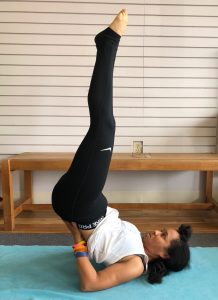
It has taken time, but I have managed to drop my ego because in hindsight, I noticed that it hindered me mentally and physically. I did things I should never have been doing and formed bad habits within my practice that took time to break and release from. I no longer have the attitude of feeling that I need to master a bunch of poses. I have many different arm balances and even a few inversions in my practice. There are two that I have chosen to exclude: Shoulder Stand and Plow Poses. The first inversion brings out my anxiety because I have discovered I do not feel comfortable being inverted upright. I am satisfied not including these specific postures in my practice because yoga should work to keep me relaxed and anxiety-free, not add to it.
It is easy for me to take yoga classes when I am in a good mood, physically feeling well and mentally in the zone. Unfortunately, every day is different and there are some days where I am not feeling well, mentally overwhelmed or just in a funk of some sort. When I am experiencing situations such as these, I remind myself everything is temporary, physical sensations will pass and to practice from my heart and not my head. It is at these times that I fully surrender everything to my mat.
One of the first things I surrender are my thoughts and emotions. Since negative thinking decreases our joy and makes receiving love difficult, whatever has me feeling upset is the first to go. I find that when I come to the mat angry or sad, I am gentler with my body, more selective with my choice of postures and take longer to recover in Child’s Pose. A long Savasana follows because rest is essential if I come to the mat already emotionally and mentally worn down.
Anxiety is a part of my life and serves as a teacher, rather than a setback. Through yoga and meditation, it is kept neutralized. Every now and then, I will have a bit of nervous energy before a class. Immediately, I tap into the deep breathing exercises done at the beginning of class so that I can settle into each posture, including any stretches done towards the end. I always feel better at the closing of class because breathing can do wonders for the body and mind.
Sometimes, my emotions are just so strong that I must release them by quietly crying, which I do in a Child’s Pose. This does not happen often, but on occasion, a good cry helps me tremendously. By releasing any pent-up emotions, the healing process becomes more effective for my body and mind.
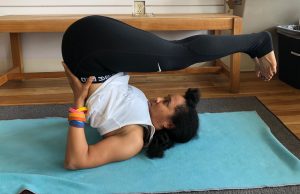
At the start of my practice, my emotions controlled much of what I did on the mat. I wanted to stick every posture I attempted and would get frustrated if I fell out of the posture or could not hold it for that long. Being off balance and wobbly within specific postures such as Half Moon Pose (Warrior III) or Eagle Pose agitated me because I did not like the fact that I had not acquired steady balance. There were times I even missed cues altogether because I had no idea what the instructor was cueing, having never heard of the posture before. The lesson of acceptance helps to keep me honest both on and off the mat. It has not been an easy lesson to learn, but it had been one of the most important.
On the mat, I am practicing in that present moment for myself. When I fall out of postures, I just get back into them and continue with the sequence. Struggling with my balance is just an indicator that I may need to shift my gaze a bit and go inside to better focus. When I miss cues, all I can do is laugh at myself because usually, I am on the wrong side when everyone else is on the correct side! It is at these moments that I cannot take myself or my practice so seriously; laughing out loud makes it all worthwhile!
In life, acceptance is tougher to practice because we yogis have an idealized concept of how we think something should be or how a situation should work out. When the opposite of what we envision happens, sometimes, we are left confused or disappointed. Embracing the struggle mentally and emotionally does more good because by doing so, we are allowing our minds and bodies to be refined so that we can perform at our beset when we need to. My feelings and emotions no longer dominate my yoga practices because I know how to subdue them with deep breathing, to feel deeply is to be at peace with where I am and that all my emotions are temporary.
The most important concept that can be applied to everything is that of unconditional love. Without it, mankind cannot live a healthy, balanced or peaceful life. This love allows us yogis to both feel and connect on deep, intense levels.
I had to realize that I could not possibly seek to love others unless I could first love myself. Self-love had to start with me; I had to change my thoughts about how I viewed myself physically. I had to re-write new scripts to replace the old ones that left me feeling doubtful and insecure about myself and my future. I had to establish a belief that change was possible in all aspects of my life. Learning how to love myself and all the novel and quirky aspects of my personality truly helped me appreciate the yogi I already was and the yogi I was still destined to develop into and become.
By learning how to love ourselves, loving others becomes so much easier. We seek harmonious relationships with everyone. There is joy in being around other like-minded people, especially yogis. A special sense of satisfaction is gained by sending a text message, e-mail or simply greeting someone with a hug. Loving vibes and positive energy promote an abundance of superior quality in all things.
I enjoy receiving nice gifts, which are mostly acts of love by other close yogi friends; moreover, I prefer to give out love to my friends and those I am close to rather than only receive. What I have found is that what I give out, the Universe supplies back to me at times when I least expect it. A friend I have been thinking about will text me or I will run into someone I have not seen in a long time. I enjoy giving my time to my yogi friends through taking classes with or from them and tea dates at various coffee shops. Yogis are truly some of the nicest people to spend time with because regardless of what their past story is, they are always ready to add a new chapter to it and create something beautiful to share with everyone around them.
Lately, I have been focusing my attention on establishing an attitude of gratitude and always having a grateful heart. Being thankful for all that I have been blessed with as well as those blessings on the way, keeps me from dwelling on past negative experiences or worse, thinking negative thoughts. When we take the time out to be grateful, whether through meditation or prayer, we keep an increased flow of all things good coming our way. The Universe recognizes this by allowing a perfect alignment of abundance to freely and consistently flow to us.
Although, I have only been practicing yoga for three years and two months, these six lessons have proved valuable for my personal growth not only as a yogi, but as a young woman just beginning to feel comfortable in her new skin. Honoring my body, staying present, dropping my ego, surrendering to the mat, acceptance within my practice on and off the mat and loving unconditionally, continue to help balance out my life. I am better able to enjoy all areas of my life, learn from others, bless them and most importantly, grow. As busy as I am, there is never a dull moment!
Contact Information:
Marie Williams
marie@.

